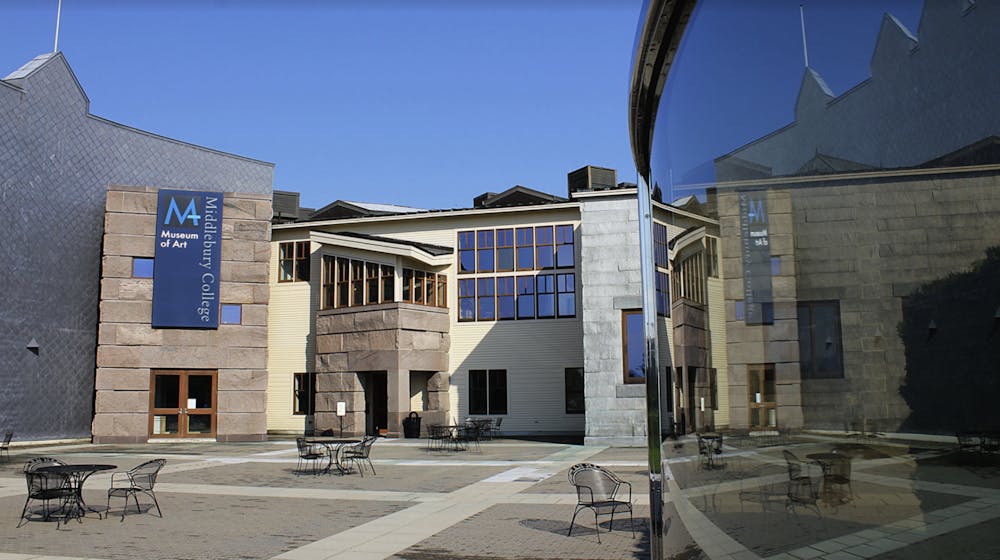On Sept. 15, 2022, the Middlebury College Museum of Art gained a new collection and perspective with the opening of “No Ocean Between Us: Art of Asian Diasporas in Latin America and the Caribbean.” The exhibit tells the stories of Asian migrants scattering in Latin America and the Caribbean through the works of Latin American artists of Asian heritage. It touches on the various struggles and triumphs associated with belonging to two different places, cultures and ethnicities with approximately 70 pieces of paintings, sculptures, installations and mixed-media works.
The collection greets audiences with a detailed history and map of the migration of peoples from Asian countries like China and Japan to countries in Latin America and the Caribbean such as Peru, Brazil, Cuba, Jamaica and Trinidad and Tobago. The exhibition is organized into sections, each dedicated to a country in the Caribbean or Latin America. Within these sections, one or more artists are featured, each with a complex story to tell. Although the media of art ranges from paintings to woodwork to collages and even videos, there is one common theme that weaves together the entire collection: contrast.
The work of Japanese-Peruvian painter Arturo Kubotta uses contrasting colors and textures to emphasize the complexity of his two identities that came from having a Peruvian mother and a Japanese father. The contrast of colors and textures in his work tells that story.
Artist Kereina Chang Fatt captures her perspective with a piece of clothing. At first glance, it seems to be a simple white dress with red flowers. However, after closer examination, it can be seen that the bottom is frayed, almost seeming to fade away. Some of the flowers are even falling off, only hanging on by a single thread. The delicacy of the dress mirrors the delicacy of identity. This incredibly simplistic piece naturally draws the observer's eye.
Other works in the space address the difficulties migrants in the past faced during their journeys to the Caribbean head on. Because the trans-Atlantic slave trade was abolished in the Carribbean in the 1830s, plantation owners worked to draw Asian migrants to the region. They were placed into a state of indentured servitude, subjecting them to harsh working and living conditions.
One of the most vibrant pieces in the exhibit is a canvas painting by Bernadette Persaud Guyan called “Wales Sugar Estate—Latitudes of Grief” (2016–17). The bright greens, blues and purples juxtapose the dark story that the painting tells and contribute to the collection’s theme of contrast. On one side are the fields of a sugar plantation, and on the other are the faces of indentured servants fading to skeletons. The painting details the struggles of inhumane labor conditions and the generational trauma that stems from them.
The exhibit presents the idea of contrast in other forms of media as well, such as textiles woven into a seaweed cloth, Peruvian and traditional Japanese Buddhist woodwork and videos of people from both regions of the world speaking in their native languages.
Joanne Doucette, one of the security monitors at the Museum, directed me toward her favorite pieces in the exhibit, which included the striking piece of clothing art by Chang Fatt and a piece titled “Maps 1,2,3,4.” The name of this piece remained a mystery, as the sewn fabric displayed did not depict anything resembling a map. Doucette said this is what fascinates her the most about this artwork.
On display at the entrance to the museum is a quote that reads, “There is no single correct way to look at and understand a work of art.” This exhibit encourages people to see through a new lens and understand not only how art influences culture, but how culture influences art. “No Ocean Between Us” is a must-see at the Museum of Art located in the Mahaney Arts Center. The exhibit is organized and toured by an art non-profit International Arts & Artists, and it runs until Dec. 11, 2022.




